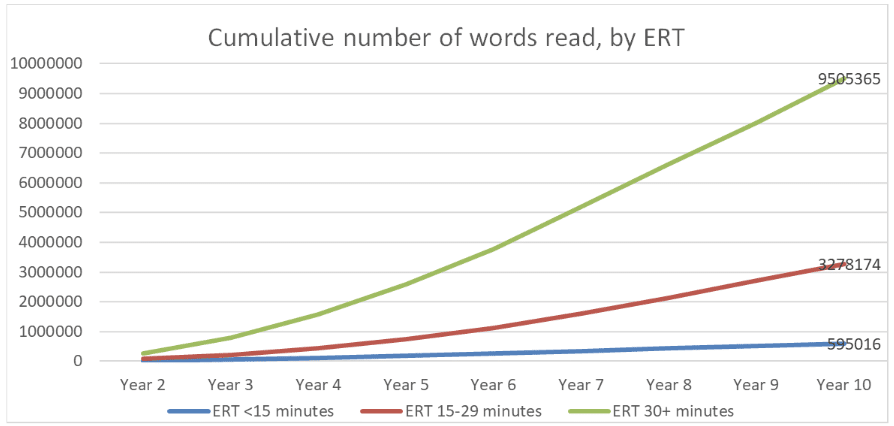The most effective indicator of quality of implementation and indeed of quality of reading comprehension is Average Percent Correct (APC)—the extent to which pupils score highly on book quizzes. Renaissance recommends that pupils score 85% or higher if they are to really benefit from the programme.
Star Reading generates individual outcome scores: The Scaled Score (from 1 to 1400) and the Percentile Rank (the percentage of scores that fall at or below a certain observation). Table 3 gives the average on these measures for all students who had both a Star Reading score and AR data.
Of 1,097,410 pupils with Star scores, Years 11 through 13 show very small numbers using AR, and there are low scores on all three measures, suggesting these do not fit the pattern and are anomalous. Years 1-10 do, however, show a very clear pattern on all measures, and all show Star scores above average, i.e., above the 50th percentile (Table 3).
For the remainder of this section of the analysis, students’ Star reading scores are divided into quartiles: Percentile 1-24, Percentile 25-49, Percentile 50-74, and Percentile 75 to 100 (percentiles are a score at or below which a given percentage of the distribution falls). The four groups are used to give an indication of the relationship of other factors to the reading performance of the students. Figure 1 shows the relationship for each year between the quartiles of students in relation to their Star reading scores and their APC on quizzes (Table 4).
In all years, there is a consistent pattern whereby the lowest APC scores are associated with the lowest reading scores, the highest with the highest reading scores, and the middle APC scores are associated with the middle reading scores. Obviously, implementation quality makes a big difference!

